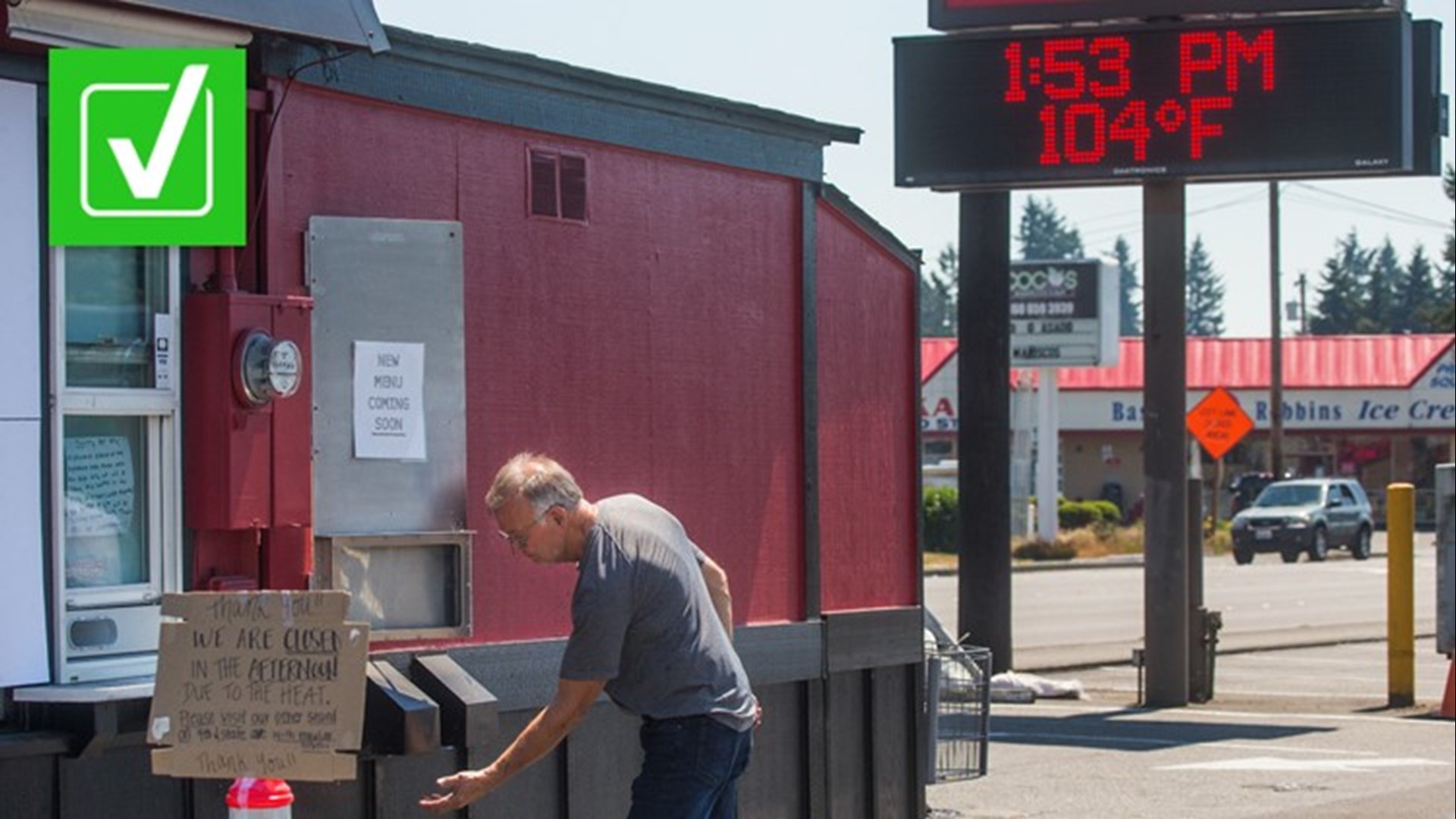Editor's note: The video version of this story is from July 2021.
Historic heat waves rocked parts of the United States in June 2021, leading to record-breaking temperatures over 110 degrees Fahrenheit in cities like Portland, Oregon. A heat wave in the following June brought various heat advisories to nearly a third of the U.S. population.
People took to social media to share ways people in homes with no air conditioning or poor air conditioning could fight the heat and stay cool. One method in particular stood out because users claimed it was both cheap and effective: covering windows with aluminum foil to reflect sunlight and the heat back outside.
A TikTok video sharing the method got more than 100,000 likes and several tweets sharing the tactic received thousands of likes and retweets. All of the posts tell people to black out windows with aluminum foil.
THE QUESTION
Does putting aluminum foil over windows help keep homes cool?
THE SOURCES
Dr. Mahabir Bhandari, research and development staff at the Oak Ridge National Laboratory’s Building Envelope & Urban Systems Research Group
THE ANSWER
Yes. Emergency management agencies specifically recommend using “aluminum foil-covered cardboard” between windows and drapes to reflect heat back outside.
WHAT WE FOUND
The Federal Emergency Management Agency (FEMA) published a June 29 blog post that included the aluminum foil tactic among six ways to combat extreme heat.
“You can keep your house cooler by insulating it and covering your windows with drapes or shades,” FEMA said in the post. “Use window reflectors such as aluminum foil-covered cardboard to reflect heat back outside.”
Local emergency management agencies echo that. Georgia Emergency Management recommends installing “temporary window reflectors” such as aluminum foil-covered cardboard between windows and drapes before extreme heat arrives. Washington Emergency Management tweeted June 22 that residents could prepare for the upcoming heat wave by installing aluminum foil-covered cardboard at their windows. Both say doing so reflects the heat back outside.
Dr. Mahabir Bhandari, a member of the Oak Ridge National Laboratory’s Building Envelope & Urban Systems Research Group, agreed that aluminum foil and cardboard are useful for cooling the home in emergency situations. But, if it’s an option, he believed it would be more effective to cover the windows from the outside rather than from the inside.
“Now, [when the aluminum is covering the window from the outside, the sunlight] is not hitting the window directly, it’s hitting that aluminum foil,” Bhandari said. “It'll absorb some and some will get inside, but then most of that will be reflected.”
Dr. Bhandari said the aluminum foil might transfer some heat through the window as the aluminum itself gets hotter and through a process called conduction could then heat up the glass. But that’s where the cardboard from the FEMA recommendation comes into play.
The cardboard acts as insulation and absorbs the aluminum foil’s heat. That means the window doesn’t end up as hot, and therefore the room behind the window doesn’t get as hot either, Dr. Bhandari said.
Heat travels through a combination of radiation, conduction, and convection. Radiation, according to a Department of Energy page on a cooling solution similar to this called radiant barriers, travels in a straight line from the source of the heat to a surface that will absorb the heat. Conduction, the University Corporation for Atmospheric Research explains, is when heat is transferred directly between two things touching each other.
“When the sun hits your window, then basically some heat can get reflected outside and some heat can get absorbed,” Dr. Bhandari said. “And then some heat can go directly inside, we call that direct radiation, and then it can also, because your window is hot, can also let go of heat later.”
“So when the heat comes in, it's trapped,” he continued. “It cannot go outside through the window the same way it came in.”
That’s why, Dr. Bhandari explained, many windows are built with a certain level of reflectiveness already. Heat won’t pass through a reflective surface, most of it will just bounce off. And if something prevents the window’s surface from getting hot, like a shutter or a piece of cardboard, then the window can’t transfer heat to the air in the room inside.
If aluminum foil isn’t available, Dr. Bhandari recommends the next best strategy is to find anything at all to cover windows and prevent sunlight and the heat it brings from getting inside. Once again, cardboard works well.
As for long-term solutions, Dr. Bhandari says there are energy efficient windows that reflect more sunlight, window films that can be applied to windows and shutters that can be opened and closed as needed to prevent sunlight from getting to the window in the first place.
More from VERIFY: Yes, heat is historically the top weather-related killer in the US
VERIFY
Our journalists work to separate fact from fiction so that you can understand what is true and false online. Please consider subscribing to our daily newsletter, text alerts and our YouTube channel. You can also follow us on Snapchat, Twitter, Instagram or Facebook.

